- Author Jason Gerald [email protected].
- Public 2024-02-01 14:11.
- Last modified 2025-01-23 12:04.
Partitioning a disk is dividing a hard drive into logical units. People often choose not to partition their hard disk, but this has many benefits. In particular, by partitioning the disk, you can separate the operating system from your data thereby reducing the possibility of damage to your data.
Step
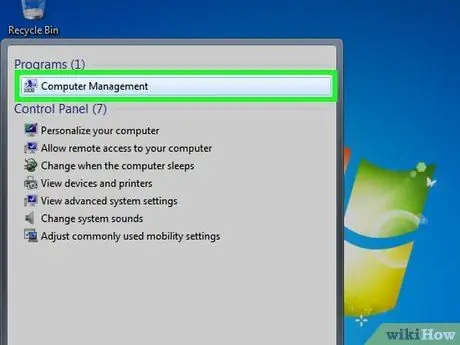
Step 1. Open the Computer Management tool
Open the Start menu. Type "Computer Management" in the search box in the Start menu and hit enter.

Step 2. Select the Disk Management tool
Click Disk Management on the left side of the window and you will see all the disks and their partitions on your computer.
In the example in the image, there is 1 disk with two partitions
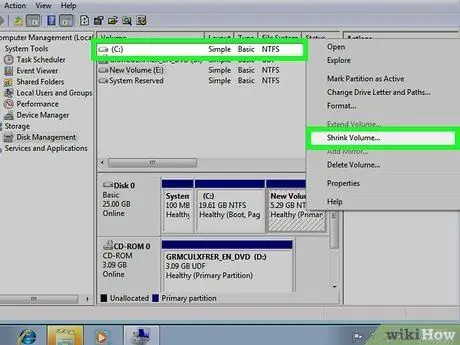
Step 3. Make free space for the new partition
Right click on the partition you want to resize and select options Shrink Volume.
- In the example in the image used is drive (C:).
-
Notes:
There may be a partition named System Reserved. It is recommended that you do not modify this partition at all.

Step 4. Shrink the drive
Enter the size you want your drive to shrink in megabytes (1000 MB = 1GB). Then click the button Shrink.
- In this example the drive is reduced to 10000 MB or 10 GB.
-
Notes:
You cannot shrink a disk volume larger than the amount indicated in the Size of available shrink space in MB section.

Step 5. Create a new volume
You will now see a new, unallocated partition in your Disk Management window. Right click partition Unallocated and select an option New Simple Volume.
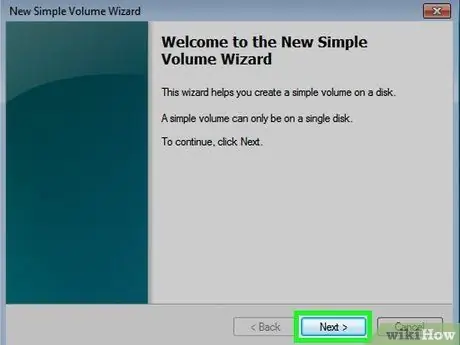
Step 6. New Simple Volume Wizard
The New Simple Volume Wizard will appear. Click button Next to continue.
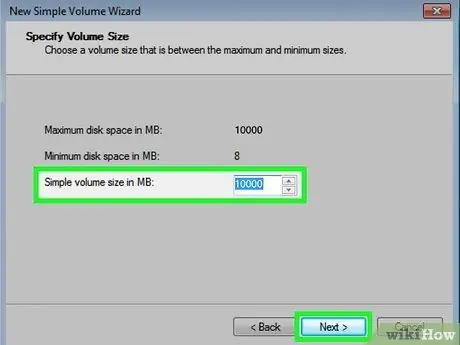
Step 7. Enter the new partition size
Enter the amount of memory you want to allocate for your new partition and click the button Next.
- In the example in the figure, the maximum available memory is allocated to the new volume.
-
Notes:
You cannot create a new volume that is larger than the maximum amount of available memory.

Step 8. Give the new volume a letter or path name
Choose from the menu a letter name for your new partition and click the "Next" button.
- The name of the letter selected in the example in the picture is (E:)
- The letter or path name is used by Windows to identify and navigate your new volume.
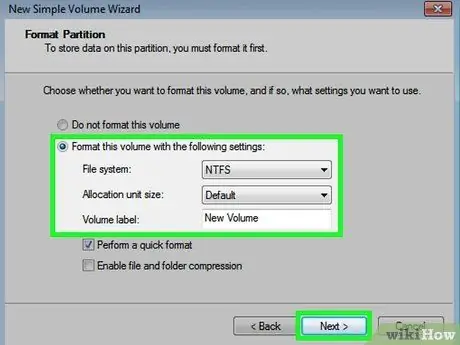
Step 9. Settings for the new volume
- Click on Format this volume with the following settings:
- To File System, choose NTFS
- To Allocation unit size, choose Default
- To Volume Label, type the name you want to give your new drive.
- Click Perform a quick format
- Then click the button Next
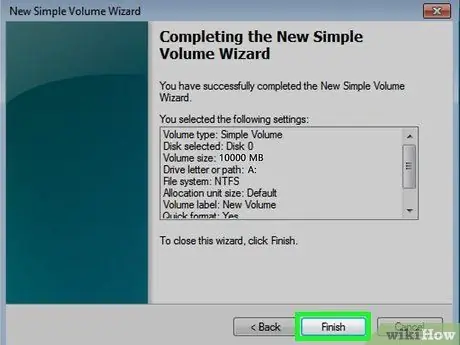
Step 10. Create a new volume
Check your settings again and click the button Finish.
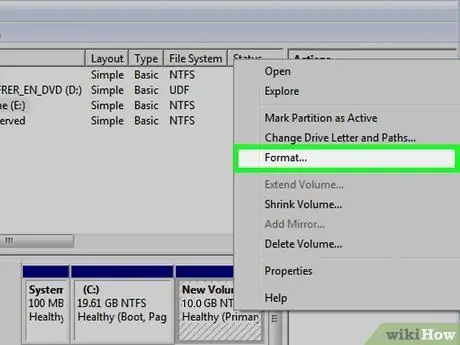
Step 11. Format the new volume
- You will be asked if you want to partition your new drive. Click button Disc format.
- A new window will appear. Save the settings and click the button Start.
- A warning will appear. Click button OK.
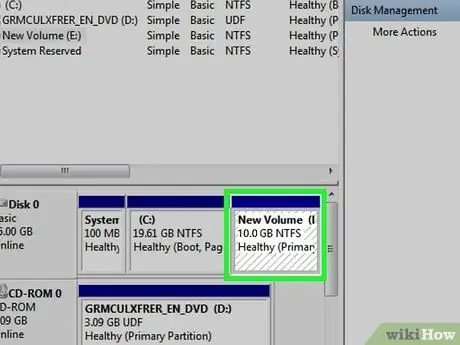
Step 12. Check the new volume
If everything was done correctly, you should now see your new drive in the Disk Management window.






